The Man Who Saved Havana
As its greatest old buildings were falling down, a fearless historian named Eusebio Leal remade the city into a stunning world destination
/https://tf-cmsv2-smithsonianmag-media.s3.amazonaws.com/filer/57/de/57deb85f-ad3c-47c4-a1bd-bc4678564f57/may2018_e13_havana.jpg)
On a sweltering morning in Old Havana, a courtly figure in a crisp gray guayabera shirt weaves through the Plaza de Armas, the city’s Spanish colonial heart, trying not to attract attention. Although none of the foreigners lolling beneath the banyan trees and royal palms recognize him, a ripple of excitement passes through the Cubans, who nudge each other, smile and stare. Perhaps only on this island obsessed with its operatic past could a historian become a celebrity on a par with a Clooney or DiCaprio. Eusebio Leal is the official historian of the city of Havana, a regal-sounding position that brings with it enormous influence and exposure—he starred for many years in his own TV show where he explored Old Havana’s streets—and he is as far from the cliché of the dusty, isolated academic as it is possible to get. In fact, Leal is credited with almost single-handedly bringing Old Havana from the brink of ruin to its current status as the most ravishing and vibrant architectural enclave in the Western Hemisphere.
Deftly dodging well-wishers, Leal ducks into the Historical Library, where some 50 female workers line up to kiss him on the cheek and offer flustered greetings. In his hectic round of duties, he has come to honor one of Cuba’s countless obscure intellectual champions—a certain Alfredo Zayas Méndez, who founded this archive 80 years ago, an exalted act in a nation with the highest level of education in Latin America. Standing before a plaque, Leal orates off the cuff for 45 minutes about the biblio-hero Zayas, a rhetorical tour de force that includes fond personal anecdotes, philosophical musings on “the importance of memory” and flirtatious exchanges that make the audience collapse into helpless laughter. He then takes questions, poses for snapshots, examines a restoration plan for the Havana Capitol—offering his expert opinion about work on the dome—before dashing off with his minder to a high-level government meeting.
The whirlwind visit leaves everyone a little dazed. At age 75, Leal shows no signs of slowing his notoriously hectic pace. For the last 50 years, almost as long as the Cuban revolution has lasted, his outsized personality has been inseparable from Old Havana itself. Working within the Communist system, he pioneered a capitalist network that would save the district’s architectural heritage at the same time as maintaining its community life so that it would not become a “living museum” like Venice or Old San Juan. A consummate politician, he combined a deft personal touch with the poorest residents while navigating the high corridors of government and hobnobbing with Fidel Castro. Although he has stepped back from direct power in the last couple of years following a serious illness, he is still regularly loaded with international honors, as both Cubans and foreigners—even Miami exiles—fall over themselves to pile him with praise.
“Eusebio Leal is a legendary figure in the preservation world,” says Joshua David, president of the World Monuments Fund in New York, who visited Havana for a workshop on architectural restoration in February 2017. “He pioneered innovative ways to fund restoration in Old Havana, which at the same time supported social programs like health clinics and old age homes.” “He’s an incredibly complex, brilliant man,” declares Gregory Biniowsky, a left-wing Canadian lawyer who has worked in Havana since 1995 and has dealt with Leal and his Office of the Historian (OHC) regularly. “He’s the best of the revolution.” Leal’s own workers are intensely loyal. “He inspires everyone,” says Mariela Mulet, the chief of the Prado Investment Group working on the Capitol. “He saved Old Havana though his own willpower. There won’t be another one like him in a long time.” On the street, the support is even more effusive: “Leal is the only person who Cubans would erect a monument to while he is still alive,” declares Alian Alera, a young librero, or bookseller. “When I was a boy, I was there when he personally came and presented my father with his book-selling license.” “Without Leal, Havana would be nothing like what it is today,” sums up the American historian Nancy Stout, who worked with his office on several books. “A lot of Cubans would do anything for him.”
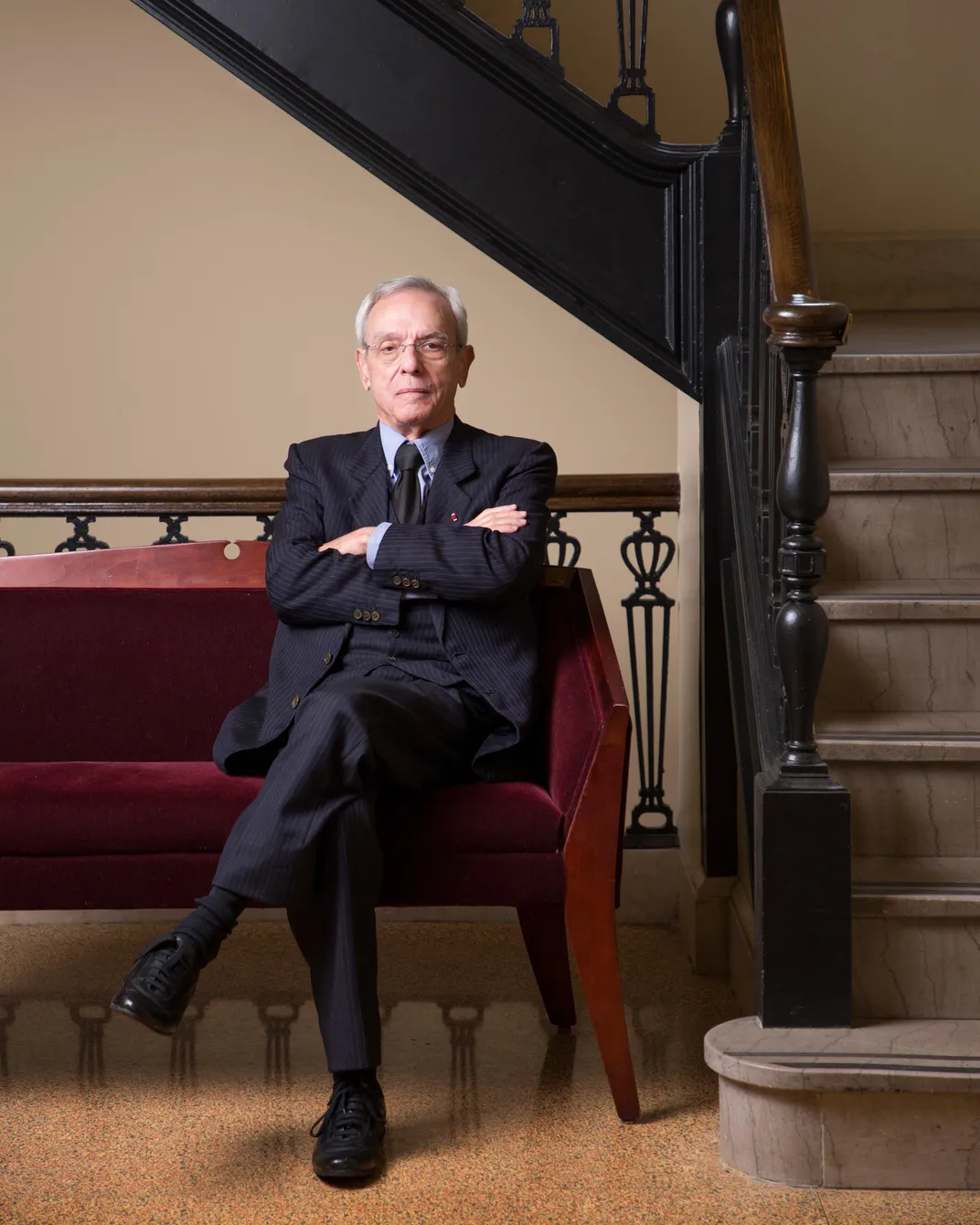
**********
Today, Old Havana still protrudes into Havana Harbor like a clenched fist, surrounded on three sides by glistening blue waters, and a stroll through its streets provides a unique glimpse of the first European steps in the New World. The city was founded in 1519, when the Spanish still had one foot in the Middle Ages and captains would casually write in their ships’ logs about sea serpents, dragons and men with two heads. Like Christopher Columbus, who had made landfall in Cuba on his first voyage 27 years earlier, settlers grappled to understand what they saw. They imagined the tracks of crocodiles were those of enchanted lions and groups of distant cranes were monks in robes; the Taíno Indians carried mysterious “firebrands” of flaming leaves they inhaled and called tobacco. With its deep harbor and strategic location, Havana soon became the staging post for brutal missions of discovery. Conquistadors sallied forth in search of El Dorado and the Fountain of Youth—and the wonders they did find, like Cuzco in Peru and Tenochtitlán in Mexico, proved more extraordinary than the fantasies. Soon galleons loaded with Aztec and Inca treasure gathered in Havana beneath a string of honey-stoned fortresses, built to protect against pirates like Sir Francis Drake. Twice a year, armadas of up to 30 boats loaded with gold and silver and their heavy naval escorts would catch the Gulf Stream back to Seville on the Carrera de Indias, the Indies Route. (The same current brought the marlin that would lure fishermen like Ernest Hemingway centuries later, the fish traveling “like cars along a highway,” as he put it in Esquire magazine.)
The story of Leal’s meteoric career rise begins in the same spot Havana was founded nearly five centuries ago, the Plaza de Armas. Dazzled by its intricate facades—a gorgeous brocade of carved curlicues, heavy oak portals and wrought-iron balconies—few visitors notice that the northern flank of the plaza, known as Calle Tacón, is paved with smooth wooden bricks. It was here that a confrontation unfolded with the municipal government that would in a sense define Leal’s future.
In 1967, as a self-taught, 25-year-old historian in revolutionary Havana, Leal learned that a heavy truck had cracked open the asphalt in front of the governor’s palace on the plaza. Investigating the site, he found fragments of a colonial-era wooden street, which the German naturalist Alexander von Humboldt had reported seeing in 1800. (It was laid, legend holds, so a governor’s wife could enjoy her siesta untroubled by carriage wheels rattling on cobblestones.) Apart from a few fragments in Paris, Rome and St. Petersburg, the wooden bricks were a unique find, and Leal soon gained permission to repave the entire stretch in wood. But as he was about to start, news arrived that a cultural delegation from Europe was on its way and government workers were rushing in with asphalt instead. “I realized I would lose the opportunity to create something unique and beautiful,” he recalls. So he lay down in front of the steamrollers—a rare act of civil disobedience in Cuba. The standoff lasted until the mayor of Havana himself came to beg Leal to get out of the way, promising that he would be permitted to re-excavate the street later. “He kept his word and so did I,” recalls Leal with satisfaction. “And the whole world celebrated the discovery of something fantastical and different: the wooden street.”
He then reworks an old Cuban rhyme: “Hay que poner un poco de locura a veces en la cordura.” (“You sometimes need to inject a little madness into the sanity.”) “In other words,” he explains, “if you are too sane, things don’t proceed, nothing happens.”
I had managed to find Leal in a rare moment of calm by meeting him at, of all places, the University of Notre Dame in Indiana, where he had traveled to give a lecture. Trailed by his entourage of embassy officials and aides, we wandered the Catholic college’s verdant grounds to visit Gothic chapels and candle-filled shrines while he painted a picture of Old Havana as vividly as if we were in the Plaza de San Francisco. Today, Leal is frail and thin, but he is still a master orator, speaking in perfectly formed sentences like a Spanish intellectual from another age. Perhaps because of his illness, he was unusually willing to speak about his early life, which had offered few clues to his success.
Old Havana / La Habana Vieja: Spirit of the Living City / El espíritu de la ciudad viva (English and Spanish Edition)
"Old Havana: Spirit of the Living City" artistically captures the architecture, people, and daily life of La Habana Vieja (Old Havana) through the lenses of two visionary photographers and colleagues, one American and the other Cuban.
Despite his rebellious streak, Eusebio Leal Spengler was in many ways a quintessential product of the revolution. He was born to a poor family in the shabby, low-rise Cayo Hueso district of Central Havana, a typically Cuban immigrant mix of Spaniards (on his father’s side) and Alsatians (on his mother’s) who traveled to Havana via Charleston, South Carolina. Although he grew up only a few hundred yards from Old Havana, he never visited it until age 7 or 8, he says, when an elderly friend of the family took him to her home. “I was amazed,” he recalls. “I had never seen stairways go up to that height! The magnificence of the cathedrals, the colors, the crowds of vendors selling everything in the street—the way they sang and danced—it was a really fascinating world!” He kept going back as a teenager to explore. “When I could see it closer, with more maturity, I was astonished by the carved stones, the spectacular iron latticework, the enormous doors,” he recalls. “It all impressed me greatly.”
At the time, Old Havana was regarded by government planners as an embarrassing eyesore. As crowded as Manhattan’s Lower East Side in its heyday, it was avoided by wealthier Cubans as a vice-ridden slum. In 1955, the dictator Fulgencio Batista even approved a plan by a New York-based design firm to level the colonial enclave’s core. Catering to Cubans’ passion for American cars, it was slated to become a combination parking lot and highway interchange lined with cheesy boutiques for cruise liners. Luckily, the plan never got past the blueprints; the Cuban revolution intervened.
Leal was 16 when Batista, having made millions from bribes from mafia-run casinos, fled into exile on New Year’s Day, 1959. A devout Catholic, Leal rushed to ring the church bells to usher in the new era, as throngs of Habaneros took to the streets in jubilation. “We were celebrating the end of the massacre,” Leal recalls, “the time when corpses would be found every day in the street, when people disappeared.” A week later, Castro and his barbudos, the “bearded ones,” rode in on their “victory caravan.” “The revolution paralyzed the systematic destruction of buildings,” Leal explains. But Fidel proved to be more interested in Cuba’s impoverished countryside than the capital, which he regarded as a parasite filled with American gangsters and prostitutes that had sucked the country dry. Old Havana was saved from the wrecking ball but left to poetically decay. (In 1959, Fidel guaranteed the district’s social coherence by banning evictions and reducing rents by 30 to 50 percent. Contrary to Marxist dogma, citizens who stayed in Cuba were allowed to keep one home and one holiday residence, according to Biniowsky.)
Still, the revolution transformed Leal’s life. He had been forced to leave school in the sixth grade to help support his single mother, who worked as a washerwoman and cleaner. Now that education was free, he put himself back in school, and began to lap up the deluge of art, music and film. (“Italian Realism, Ingmar Bergman, Orson Welles!”) Above all, the voracious autodidact haunted the libraries. “It was in the silence of the library that I learned the love of books as objects, and their fascinating contents,” he says, poring over works of the ancient Roman engineer Vitruvius and the Renaissance architect Palladio. “I am what I read in those books!” He also sought out the famous Office of the Historian. “By ancient tradition, every old city in Latin America maintains the institution of ‘chronicler,’ who is named for life to save the memory of the city,” he explains. In the early 1960s, the position was taken by a writer with the sonorous name of Emilio Roig de Leuchsenring, and Leal went to study at the small museum he maintained. In 1962, after charming Roig’s wife and secretary, he was introduced to the man himself. They spoke for hours. “He was very eloquent, very accessible,” Leal recalls. “When I was leaving, he took both my hands like a salutation and said, ‘This is not an end, it’s just the beginning.’”
The prolific Roig was at the center of a circle of left-leaning bohemians. “There were historians, teachers, geographers,” Leal recalls of this golden age. “I was 20 years old, they were mostly 60, 65...some were 80 or more. I used to track them down in the homes,” he laughs, rapping the table with his knuckles as if knocking on a door.
By the time Roig died in 1964, Leal was a regular at the Historian’s Office. (“I wasn’t an employee but a confidant.”) Three years later, when a plan was unveiled to turn the governor’s palace on the Plaza de Armas into the first museum to Havana’s history, Leal was hired as architect, archaeologist and, at times, laborer. (“It was very manual. I was sometimes a construction worker, sometimes a bricklayer.”) At the same time he worked alongside renowned scholars such as Irving Rouse of Yale University. When the museum finally opened in 1976, Leal was the natural choice to be its first director.
By then, his work had drawn the attention of Celia Sánchez, Fidel’s partner in the guerrilla war of the late 1950s who took a passionate interest in Cuban history. Celia had become the unofficial gatekeeper for access to Fidel, and her patronage allowed him to present his ideas to the Maximum Leader. “Leal went to Celia to lay out his personal vision,” says historian Nancy Stout, author of a biography of Sánchez. “She would talk to Fidel and create a momentum that people couldn’t oppose.” It was a valuable friendship: Leal’s Catholicism and energy had ruffled the feathers of many Communist bureaucrats. “When you are riding a horse, you kick up lots of dust and those who follow behind get dust in their eyes, and it bothers them,” he says. “Celia helped and protected me.”
International recognition came when Old Havana and its crown of Spanish forts were declared a Unesco World Heritage site in 1982, among the first sites to receive the accolade. The listing covered 529 acres, including 242 blocks with some 4,000 buildings. Not all of them are colonial. In fact, Old Havana’s streets are a sprawling encyclopedia of Western architecture, with buildings from the 16th to the 20th centuries tossed together—a mix of Rococo, Baroque and neo-Classical styles with crumbling gems such as Art Nouveau pharmacies thrown in. But the Unesco honor came with few funds from Geneva, and foreign tourism was not considered a way to attract income. “Tourism was still regarded as part of a very exploitative past,” says Joseph Scarpaci, director of the Center for the Study of Cuban Culture + Economy and co-author of Havana: Two Faces of the Antillean Metropolis, referring to the mafia-run casinos and brothels that had defined Havana in the 1950s as the “sin city” of the Caribbean: “Fidel had always made it clear that he didn’t want Cuba to be an island of chambermaids and bartenders.” By the end of the 1980s, Old Havana was in a dire state. Its 75,000 residents were often without working plumbing or regular electricity. Landmark buildings were on the verge of collapse and riddled with amateur renovations. Pools of putrid water and garbage gathered in corners, the sidewalks were cracked like eggshells, and there was almost no street lighting. Old Havana, it was sometimes said, was “a 40-watt town”—on a good night.
From Castles to Nymphs
The evolution of architecture in old Havana.
Renaissance | Castillo de la Real | Fuerza, 1577
/https://tf-cmsv2-smithsonianmag-media.s3.amazonaws.com/filer/0a/cd/0acdee39-0ea0-4fdb-8734-ee455c74a0be/may2018_e02_havana.jpg)
Built in a typical four-point Renaissance ground plan modeled after structures in Seville, the “Castle of the Royal Force” is the oldest stone fortress in the Americas. Atop its west tower is a bronze weathervane called “La Giraldilla.” The female figure, holding a cross in one hand and a palm tree trunk in the other, has become a symbol of Havana.
Baroque | Catedral de la Habana | 1777
/https://tf-cmsv2-smithsonianmag-media.s3.amazonaws.com/filer/b0/36/b0362e2e-27e8-446f-ba73-09e651842b23/may2018_e06_havana.jpg)
Featuring an undulating facade flanked by bell towers of unequal size, the majestic church—once believed to have housed the remains of Christopher Columbus—is among Havana’s most visited landmarks and one of the oldest cathedrals in the hemisphere.
Neo-Classical | Aldama Palace |1844
/https://tf-cmsv2-smithsonianmag-media.s3.amazonaws.com/filer/a9/04/a9047607-4033-45d7-8c5e-0e4478fc1865/may2018_e05_havana.jpg)
Once the city’s most lavish residence, the two-story mansion was built for the wealthy Spanish merchant Domingo de Aldama. The facade of the massive stone structure, now home to the Cuban History Institute, features pilasters, porticoes and columned windows, all popular elements in European architecture at the time.
Art Nouveau | Group of Houses on Cárdenas Street | Early 20th Century
/https://tf-cmsv2-smithsonianmag-media.s3.amazonaws.com/filer/29/79/29792554-ca90-477b-a804-e0aadc117a62/may2018_e04_havana.jpg)
The buildings, with leaf-shaped side windows, Moorish balconies and doors carved in flower motifs, are the finest examples of Art Nouveau architecture in Havana. Many were designed by Catalan architect Mario Rotllant, a contemporary of Antoni Gaudí.
Eclectic | Hotel Ambos Mundos | 1924
/https://tf-cmsv2-smithsonianmag-media.s3.amazonaws.com/filer/59/8c/598c53fa-1989-4ed3-bf3d-78ee60dfd03b/may2018_e03_havana.jpg)
A patische of various architectural styles, from neo-Classical to Art Deco, the “millennial pink” hotel is most famous today for its association with Ernest Hemingway. It was here, in Room 511, in the 1930s that the author wrote many of his most famous works, including Green Hills of Africa and Death in the Afternoon. The room is now a museum furnished with pieces from his Havana home, including his desk and typewriter.
Art Deco | Bacardi Building | 1930
/https://tf-cmsv2-smithsonianmag-media.s3.amazonaws.com/filer/77/55/77558940-8d05-4d8f-ac9b-bc152fd87c8c/may2018_e01_havana.jpg)
The former headquarters of Bacardi Rum, the 12-story skyscraper—the first in Havana—is today an office building. Designed by a team of Cuban architects, the building’s facade is granite with terra-cotta reliefs of nymphs designed by Maxfield Parrish. On top is a stepped pyramid capped by a brass bat, the logo of Bacardi.
Salvation came, paradoxically, from economic disaster. The collapse of the Soviet Union and the end of sugar subsidies in 1991 threw Cuba into bankruptcy, beginning a decade of privation euphemistically called “the Special Period in Time of Peace.” Things were desperate by 1993, when Leal accompanied Fidel on a trip to Cartagena, another Spanish port in the Caribbean that the Colombian government was turning into a hugely lucrative tourist attraction. On the flight out, Fidel came to Leal’s seat, he recalls. “He asked me: ‘What can I do—or what can we do—for Habana Vieja?’” Without hesitation, Leal explained that an entirely new economic model was needed where hotels, restaurants and museums would earn hard currency—the U.S. dollar had just been legalized—and profits could be pumped directly back into restoration. The approach departed from decades of state-controlled policy, but Leal told Fidel that “without a sound financial basis, the idea of saving Old Havana is a utopia. It’s a fantasy. It’s like St. Augustine’s City of God.” Saving Old Havana did not mean giving up progressive Socialist principles, Leal assured Fidel. In fact, central to his plan was to keep residents in their homes and use tourism to improve living standards. “We’re not talking about Pompeii or Herculaneum. We’re talking about Havana! We have to invest in schools, playgrounds, services for the elderly.” (Leal drew on liberation theology, he says, which inspires progressive priests to work in poor communities from rural Brazil to Nicaragua: “It’s not possible in Latin America to talk about social justice without taking into account Christian thought.”)
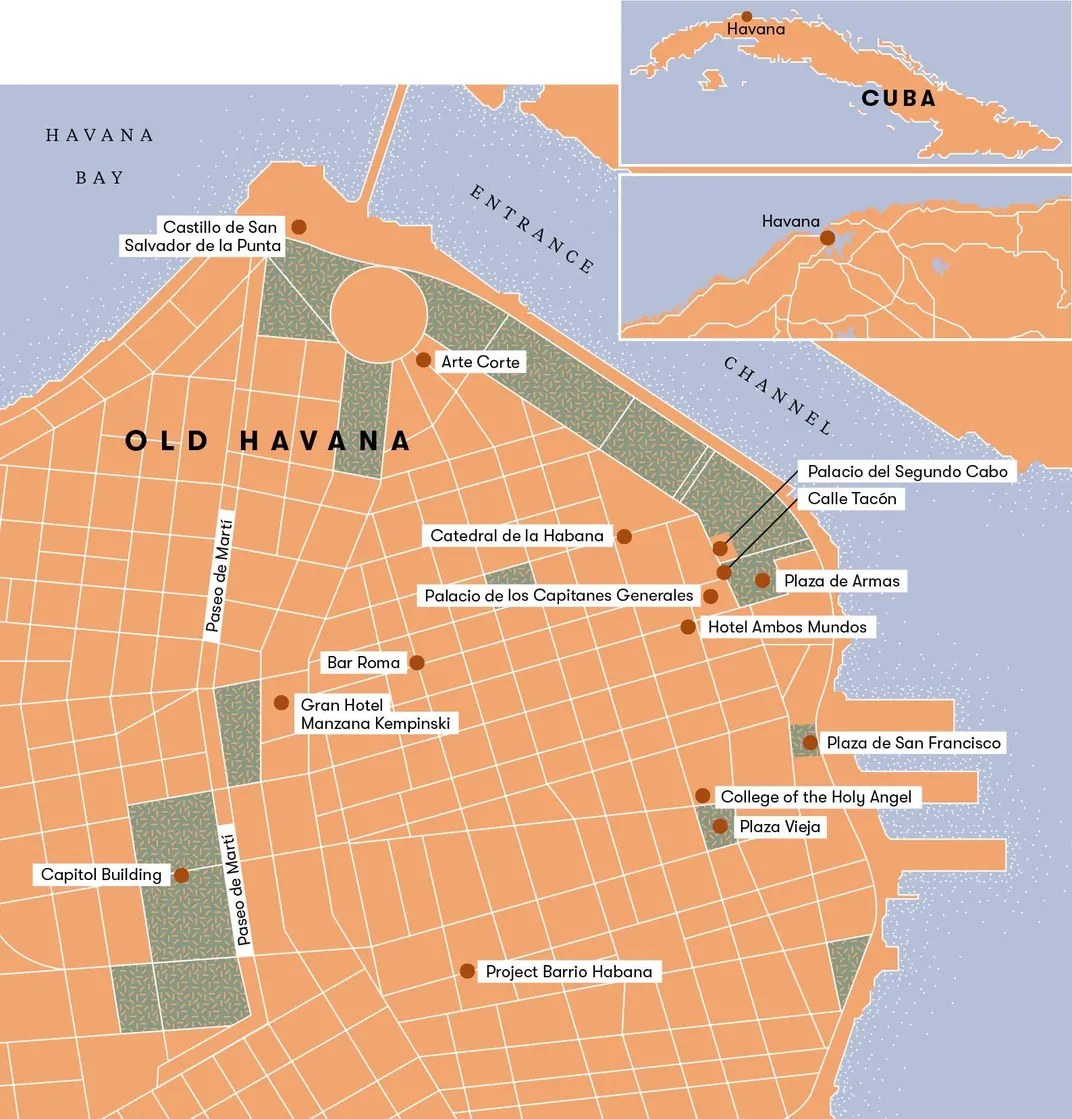
Fidel was sold. A trained lawyer, he personally drew up legislation to create a unique company called Habaguanex, which could deal directly with foreign investors and was exempt from returning its profits to the state. (Although the name sounds like a Soviet-era pharmaceutical venture, Habaguanex was actually a heroic Taíno Indian leader of the early 1500s, who quite probably gave his name to Havana as well.) Leal was at last appointed historian of the city, given $1 million in seed money and carte blanche on how to use it. “Fidel gave him everything,” says Stout. “He even had a special security force at the historical sites. Cubans used to joke that he had his own personal army.”
Fidel’s sense of urgency may have been heightened by an incident in Old Havana only a few weeks before. A visiting British journalist for the Independent newspaper was photographing the splendid facade of the College of the Holy Angel in the Plaza Vieja when it started to wobble in front of his eyes. “He said to me, ‘Oh look, it’s falling down,’ in typically dry British style,” recalls Victor Marín, an architect and vice president of ICOMOS, the International Council of Monuments and Sites in Cuba, who was with him at the time. “And as we watched, the whole thing crumbled before our eyes!” Although nobody was hurt, photos of the collapse were plastered around the world, embarrassing the Cuban government, which seemed incapable of looking after its heritage.
Leal’s first ventures in the 1990s were modest: With his team of academics and craftsmen, he opened for paying guests three small restaurants and the Hotel Ambos Mundos, where Ernest Hemingway had lived in the 1930s while writing For Whom the Bell Tolls. (It was conveniently located between El Floridita, a bar known for its excellent daiquiris, and La Bodeguita del Medio, famed for its mojitos.) Thanks to the U.S. trade embargo, workers had to be creative in finding building materials. “I was able to talk to Fidel almost daily about the problems and he would come up with a solution,” Leal recalls. He became Fidel’s “man for capitalism,” managing the only for-profit entity in all of Cuba. Funds from his first humble enterprises were soon put back into restoring more restaurants, bars and hotels, as well as the colonial squares. In Plaza Vieja, an ugly parking lot from the 1950s (which was in theory underground but actually rose a yard above the ground) was imploded and its centerpiece became a fountain of Carrara marble with spouting dolphins, recreated from old drawings of the original design by Giorgio Massari, one of the myriad Italian artisans who flooded Cuba in the 18th century.
Residences were also renovated: Behind the Fototeca de Cuba gallery on the Plaza Vieja, for example, is a Spanish courtyard with eight apartments that are still inhabited by the original residents. Other housing was built from scratch in vacant lots. At the same time, a percentage of the profits went to programs such as breakfasts for schoolchildren, maternal-care facilities, centers for retirees and spaces for young artists. All this made Leal immensely popular, a beacon of hope in the grim economic horizon of the Special Period. “Leal got things done!” says historian Stout. “But he was also there for Habaneros in a very intimate, hands-on way. He would go to the construction sites every day to make sure his workers had lunch!”
As success followed success, the Office of the Historian expanded. In 2003, it took over much of the seaside promenade, or Malecón, and in 2005, Chinatown, while Old Havana became the engine for Cuba’s booming tourist industry. The financial benefit from Fidel’s original $1 million investment is hard to estimate, since Cuban companies do not open their books. But in 2011, the Washington Post reported, the annual revenue of Habaguanex was $119 million with $23 million in profits. The Office of the Historian employed some 3,000 workers, most of whom were locals, and by 2016, it managed some 20 boutique hotels, 25 restaurants, 30 stores, various museums, a radio station and a glossy magazine, Opus Habana—a total of over 300 different entities. (As Cubans joke: “When we want to be, Cubans can be more capitalist than the capitalists.”)
Leal, meanwhile, became a uniquely Cuban celebrity—a deputy in the National Assembly, known for a series of marriages to much younger women (which Fidel and Raúl Castro attended), and a popular media star. For his hit TV and radio series “Andar La Habana” (“Walk Havana”), he wandered the streets recounting forgotten stories—how, for example, the British captured the city in 1762, then exchanged it for the Spanish colony of Florida. He also became a darling of the foreign media—even in the United States, where National Geographic described him as “a man of action as well as words,” the academic answer to Che Guevara. “He was handsome, he was well-spoken,” recalls Lucy Scott, then a field producer for “CBS News” who interviewed Leal several times. “He knew his stuff but he was also very of-the-moment. Only later did we realize the real depth of his knowledge.” Leal was chosen to give personal tours to visiting dignitaries: Most recently, he showed Pope Francis around in 2015 and President Barack Obama in 2016.
Eventually, Habaguanex became a victim of its own success. Although Leal was above suspicion, corruption scandals began to emerge in the company after 2012. The details are still shadowy (“Cuba is like a Fellini film, you never know what part of the journey you are in,” says Scarpaci), but there were a string of arrests for embezzlement, drug sales and bribery. Leal became seriously ill, and while he was recovering in August 2016, control of Habaguanex was transferred to a sprawling military-run enterprise called GAESA. Leal declared that the move would allow the Historian’s Office to concentrate on its true mission, cultural preservation. And so far, GAESA’s presence has had little practical effect. “They said they would keep up support for our projects, and they have kept their word,” said Ayleen Robainas, an architect and urban planner with the Master Plan office, which oversees the preservation efforts.
Old Havana’s status is now assured as the centerpiece of the Cuban tourism industry. “It’s one of the most extraordinary urban historical centers in the world,” says Joshua David of WMF. “And it’s even more remarkable for its proximity to the United States. You fly a few minutes from Miami and you’re in a completely different world.”
**********
Havana Modern: Twentieth-Century Architecture and Interiors
A revealing collection of astonishingly fresh and undiscovered midcentury architecture and interiors in Havana.
Today, the hand of the Historian’s Office is everywhere in the Old City, its logo on interpretive signs, before-and-after photos (entitled “Para No Olvidar,” “Lest We Forget”) and building sites. The Master Plan office is now a shiny, high-tech warren filled with engineers, architects and sociologists, offering Wi-Fi to local residents and a hall for monthly meetings. (One of its popular events is a weekly seminar on how to start a small business; the office receives 50 applications a week from budding entrepreneurs, mostly for paladares, private restaurants, and casas particulares, bed-and-breakfasts, it says.)
Visitors from around the world now throng the cobbled pedestrian lanes between the four plazas, dubbed “the Golden Kilometer” by the office. Leal’s former headquarters in the Plaza de Armas, the Palacio de los Capitanes Generales, is now surely one of the world’s most charming museums, with emerald peacocks parading around its courtyard filled with palm trees. Next door, the Palacio del Segundo Cabo, built in 1772 as the royal post office for all of Spain’s Latin American possessions, was reborn in May 2017 as a state-of-the-art museum devoted to cultural connections between Cuba and Europe. From there, “a parade of columns,” as Marín dubs the shady colonial patios, leads to the Cathedral (which the Cuban author Alejo Carpentier called “music turned to stone”).
Still, San Cristóbal de la Habana, as the city was formally known, was a rough-hewn place for its first two centuries. The street names evoke its raw early days: On Calle Oficios (trades), artisans hammered leather boots and horseshoes. On Mercaderes (merchants), vendors offered sandalwood from Brazil and cured meats from the old country. Picota (yoke) was where criminals were tied to a post and flogged. The port only grew to its current grandeur in the 18th century, when vast city walls were completed and aristocratic mansions were carved from limestone blocks. Hundreds of merchant ships docked within sight of the plazas, the air rang with the sound of church bells and cockfights, and the streets teemed with smugglers. By then, Cuba’s indigenous people had been almost entirely wiped out, but the rise of sugar plantations turned the trickle of African slaves into a flood that would give Havana its rich racial mix.
As sugar exports made Cuba rich, the city walls were torn down in 1863 and replaced by a grand avenue called the Paseo del Prado built along Old Havana’s margins, lined with spectacular buildings that are being restored today. Leal’s most ambitious project to date is the renovation of the spectacular Capitol Building, which opened in 1929 and resembles the U.S. Capitol in Washington, D.C. Since 2013, artisans have been buffing its splendid bronze doors, polishing its 60 types of marble and removing decades of dust from giant statues. “The U.S. Capitol doesn’t have interior courtyards as the Cuban one does,” said the project’s director, Mariela Mulet, as we strolled through the cavernous interior swarming with artisans. “And our cupola is 12 feet taller!”
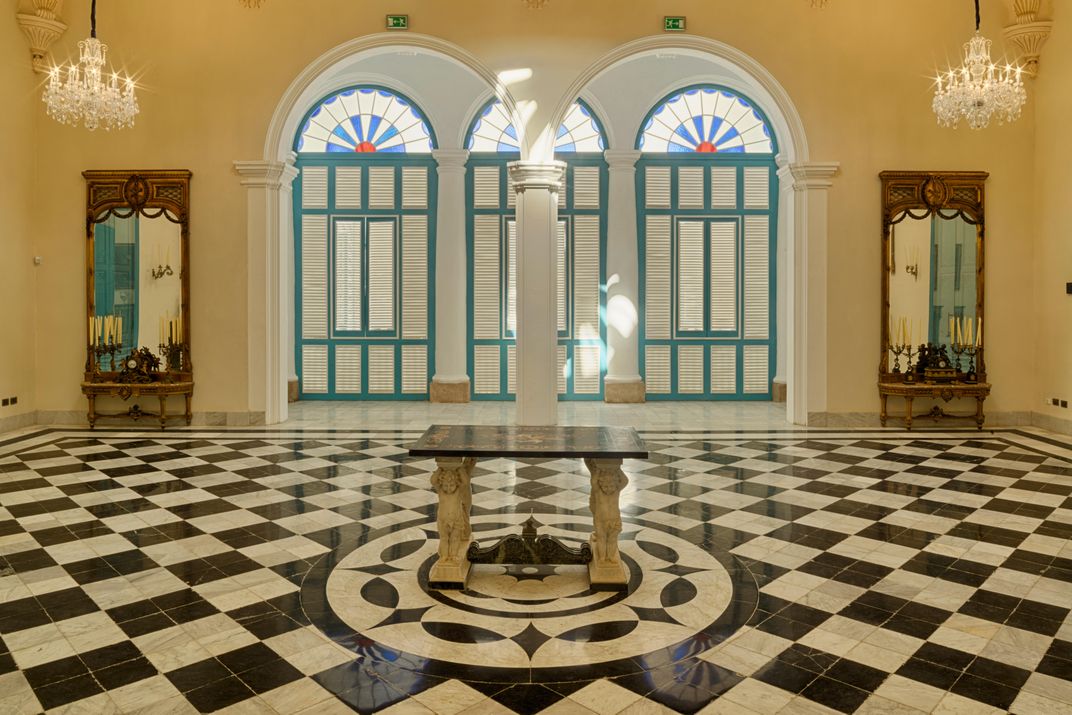
To prove the point, she finds a key and leads me on a backstage climb up to the dome’s windswept summit. We clamber up wrought-iron interior stairs, go hand-over-hand along rickety scaffolding, then emerge onto the exposed belfry 302 feet above the city just as a thunderstorm hits, lashing our faces with rain globules that sting like needles. The whole of Havana spreads below us in a glorious buffet. “What a view!” Mulet shouts over the gale. “But up here you think: Oy, how much more there is to do!” From this aerie, it is obvious that Old Havana is only a fraction of the sprawling metropolis. Many of Leal’s own people now take an interest after-hours in restoring more modern parts of the city with a design group called Habana Re-Generacion: Along the harbor, for example, are abandoned factories, warehouses and an electricity plant from the early 1900s, when Cuba had some of the most advanced technology in Latin America. There are dreams to bring these structures back to life—the electricity plant could be the next Tate Modern, the warehouses turn eastern Havana into a new Brooklyn—if only for the lack of funds.
**********
Nobody denies that much more work needs to be done in Old Havana as well. “It’s an extraordinary success story,” says David, “but there are also an extraordinary number of buildings in urgent need of repair.” This is obvious only a few steps from the Golden Kilometer, where streets are still in a state of dreamlike decrepitude. Walls are crumbling, trees grow like weeds from abandoned balconies and the streets are still an obstacle course of open sewers and potholes that could swallow a vintage Cadillac. Emergency repairs prop up houses battered by tropical deluges and eroded by salt air.
Like anyone who has undertaken such an ambitious project, Leal is not immune to criticism. “The Cubans have their own narrative of what is unfolding in Old Havana, and they bristle at counternarratives,” says Scarpaci. “I admire Leal, his intelligence and his generosity,” he stresses, but argues that there has been a “Disneyfication” of Old Havana. Courtyards are adorned with dubious contemporary artworks, Scarpaci says, and commercialization has spread, with Benetton and other foreign hard currency stores displacing residents. “What are you going to do in Cuba, write a letter to the editor?”
The residential renovations for the 55,000 current inhabitants have also been drawn-out and complicated. Due to Old Havana’s overcrowding, not all tenants were able to stay in their homes: In one typical building, 61 families shared a handful of bathrooms with little access to water; after the structure was gutted and converted into modern apartments, only 16 families were able to return. Sociologists worked with residents to decide who would stay. The others were relocated to Soviet-style housing projects across the harbor, which are often more comfortable but charmless and remote.
Like all Cubans, residents are also scrambling to cope with Raúl Castro’s reforms of 2011, which permitted 200 professions to earn hard currency and allowed people to sell and rent their homes. This has brought a new phenomenon: gentrification. “Life is changing!” says Victor Marín. “Owners of old American cars who used to be too poor to pay for gas are now driving around tourists and getting rich.” The influx of new money means that the Historian’s Office, he says, “needs to balance the new realities.”
Sometimes these “new realities” blend past and present seamlessly. In 2016, a Cuban DJ who goes by the name Alain Dark turned his family’s rooftop apartment in the heart of the Old City into the open-air Bar Roma. Located in a crumbling apartment building, it can be reached by a rattling iron-cage elevator from the 1920s operated by an elderly resident. “Where was I born?” Dark shouts over the throbbing Cuban pop, then marks out a circle on the tiled floor with his toe. “My mother gave birth to me right here! I grew up in this building.” Covered in tattoos and wearing a baseball cap backwards, he recalls following tourists about the streets as a kid. “I also grew up asking foreigners for Chiclets!” he says with a laugh. “‘Hello, mister, one Chiclet, please? One money?’” The bar now serves lechón, pork sandwiches, and cuba libres to a bohemian crowd that is half foreign, half Cuban—and Dark makes sure that the small cadre of local fashionistas and artists get free drinks, subsidized by sales to outsiders. Elderly neighbors wander in and out of the bar, and those on the same floor open their own apartments and sell snacks to patrons. One elderly lady named Xiomena sitting regally on her frayed lounge chair even makes a little spare cash by providing access to her baño.
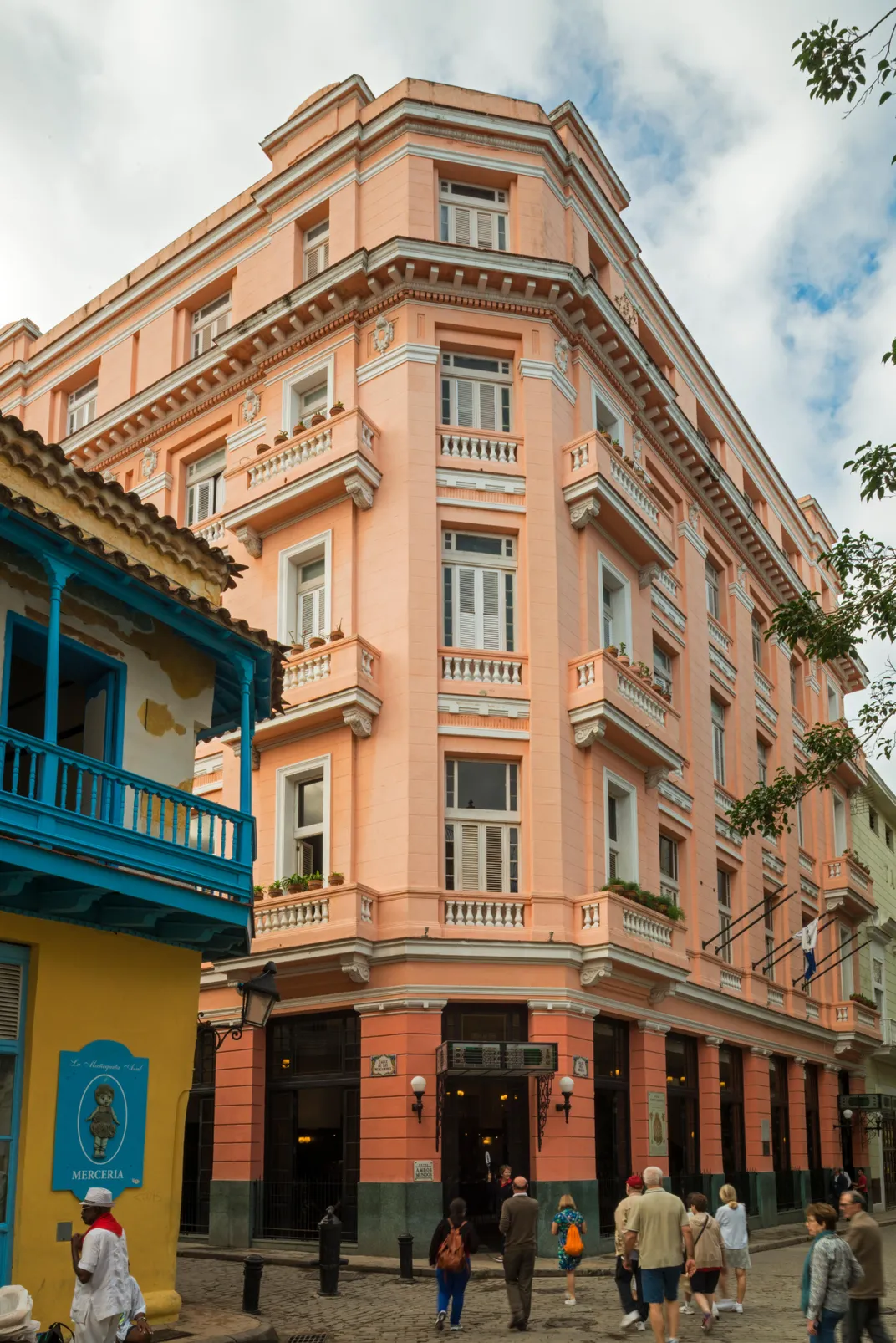
Other times, the new realities are more complex. Many Cubans were disconcerted when the first genuine five-star hotel, the Gran Hotel Manzana Kempinski, opened in an iconic 1917 shopping arcade on the edge of Old Havana in spring 2017, largely because in the ground-floor luxury stores items such as $10,000 Rolex watches were being sold by locals who earned about $30 a month. But Habaneros have quickly gotten used to the idea, and are often seen wandering the mall out of curiosity. “It will attract a different kind of tourist,” says Ariel Piedra, one of the local architects on the Manzana. “It won’t be the Canadian fireman who wants to drink a ton of beer and then leave.”
Still, communal life continues with an energy unheard of in other Latin American colonial sites, most of which are virtual ghost towns after dark. Just a few doors away from trendy new cocktail bars like O’Reilly 304 are crowded bodegas, hole-in-the-wall butchers with bloody meat hanging from hooks, and elementary schools where the kids still wear crimson-and-white uniforms introduced in the Soviet age. Every block includes glimpses through windows at rooms where old couples, the husband in a wife-beater, might be watching vintage TVs under peeling posters of Che or Fidel in their prime.
In remote corners of Old Havana, Leal’s work inspired grass-roots ventures nobody could have imagined in 1993. At its northern edge, the once-derelict Callejón de los Peluqueros, Hairdressers’ Alley, is thriving again after a barber known as Papito set up Artecorte, a combined salon and art gallery. Its success has attracted a string of private cafés with outdoor tables in streets blocked to traffic. (“It’s almost like Rome,” marvels Marín.) In the far south, a former red-light district, the self-styled “social entrepreneur” Pavel García, who has the shoulder-length hair and bushy beard of an Old Testament prophet, runs a project called BarrioHabana, which organizes neighborhood kids into soccer teams as a way to get them involved in the arts. The teams now paint murals, join chess clubs and visit Havana’s museums and theaters. “The kids used to think these places were just for tourists and the rich,” says García, “but we show they are for them too!”
**********
Despite his recent illness, Leal is filled with plans for Old Havana’s future. The entire waterfront will be revived to greet an expected influx of cruise ships. The train station will be opened this year as a museum to the Cuban railway system, which was the first in Latin America. And new community projects include “148,” a derelict Art Deco block in the very heart of Old Havana being turned into a combination of low-cost housing, student residences and a cultural center for teenagers, complete with radio, sound and TV recording studios.
And Leal is as open as ever to creative ideas. In January 2017, he visited the Google offices in Manhattan to celebrate a 3-D movie collaboration about Cuba’s national hero, José Martí, who lived in New York in exile for 15 years, in part to promote U.S.-Cuban relations by emphasizing the countries’ shared history. (A statue of Martí stands in the southern edge of New York’s Central Park.) Timing the visit just after President Donald Trump’s inauguration was not accidental, Leal explained, when I met him not long afterward at Notre Dame. Trump’s vow to roll back the Obama-era thaw has thrown the future of Cuba—and Old Havana—into uncertainty once again. In November 2017, new travel rules were brought in that require American tourists to work with an authorized tour group to ensure compliance (although they do not need to go with a group). Americans were also banned from patronizing many GAESA-run hotels and restaurants, but how this might be enforced is unclear.
“I don’t have a crystal ball,” says Leal. “But I know that each era brings its own challenges. All we can do is prepare ourselves intellectually, emotionally, ethically for what is to come.” And with that he leapt up and declared the interview over. (“Now you know more about me than I know about myself!”) He dashed off with his entourage into a waiting limousine for the airport. Matters in Old Havana needed his attention.
Planning Your Next Trip?
Explore great travel deals
Smithsonian magazine participates in affiliate link advertising programs. If you purchase an item through these links, we receive a commission.
A Note to our Readers
Smithsonian magazine participates in affiliate link advertising programs. If you purchase an item through these links, we receive a commission.
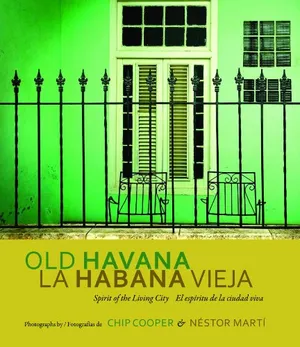
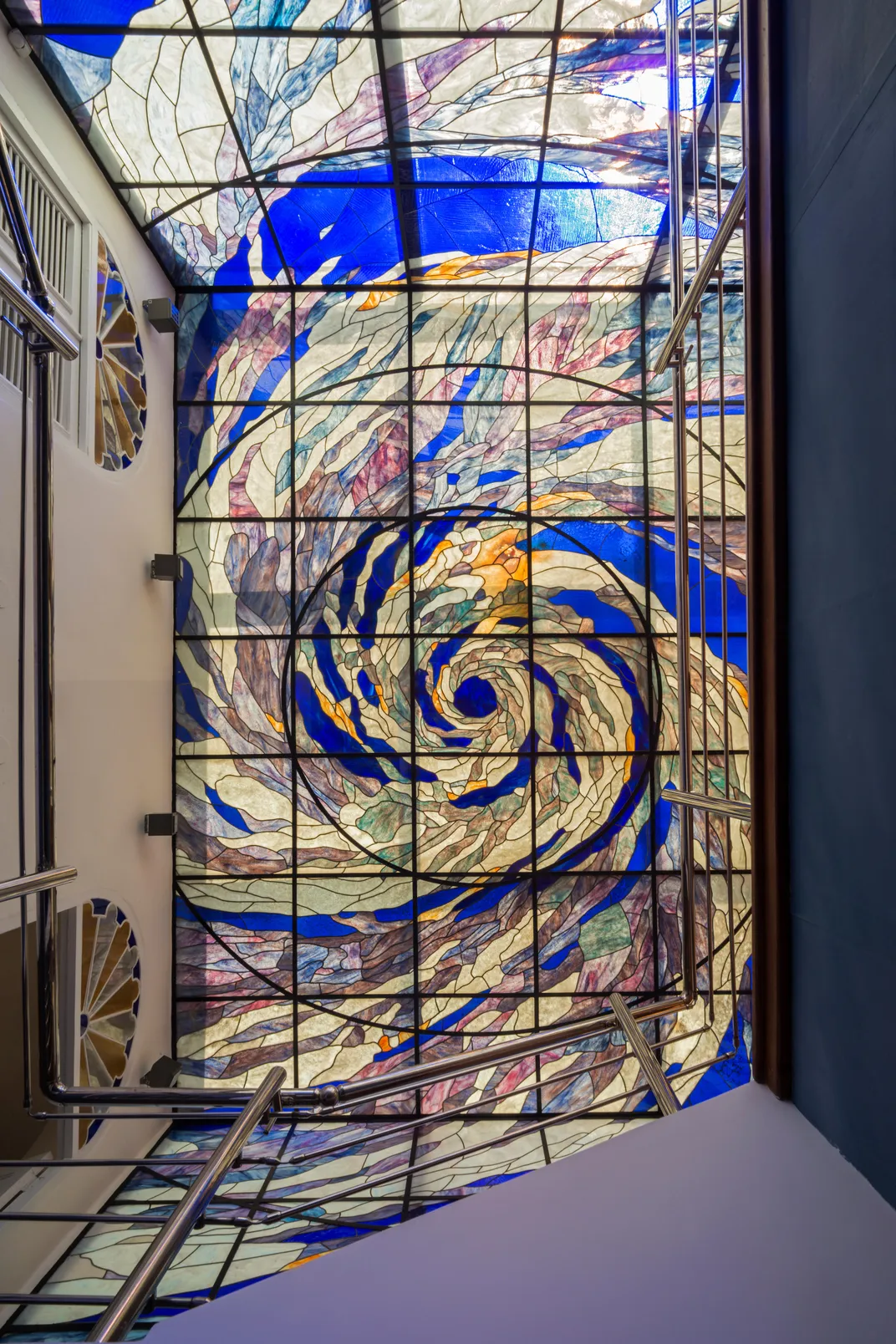
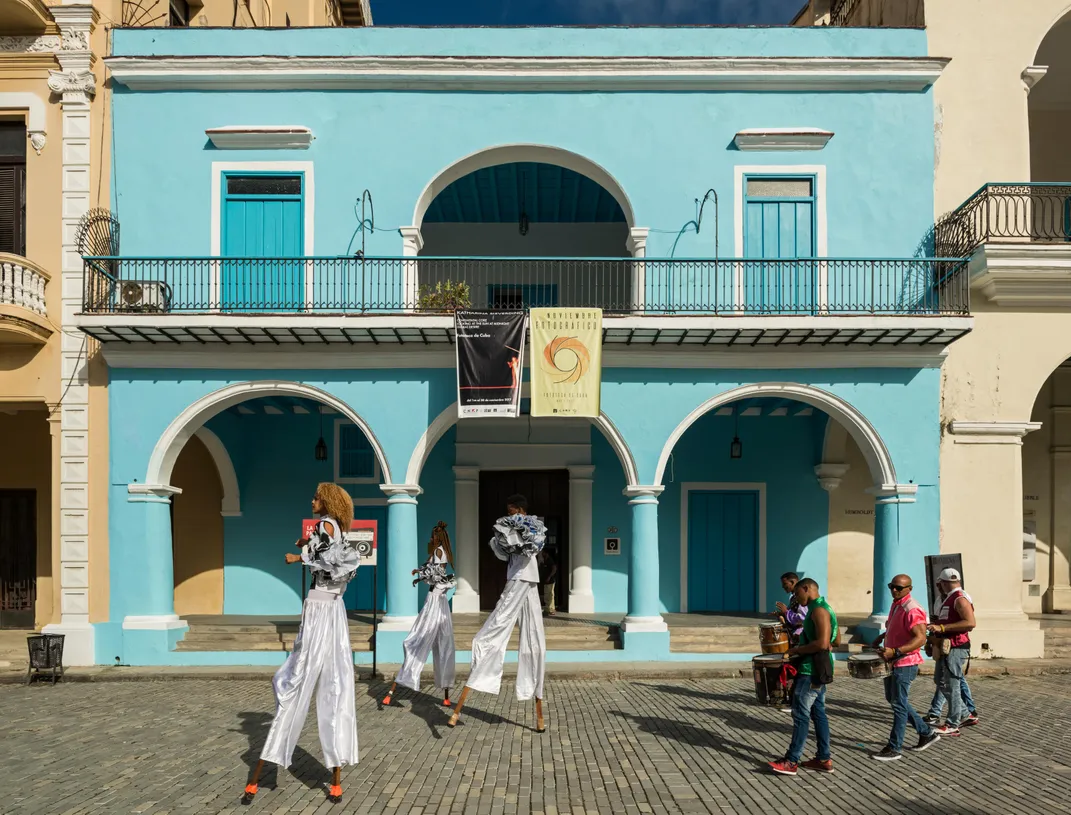
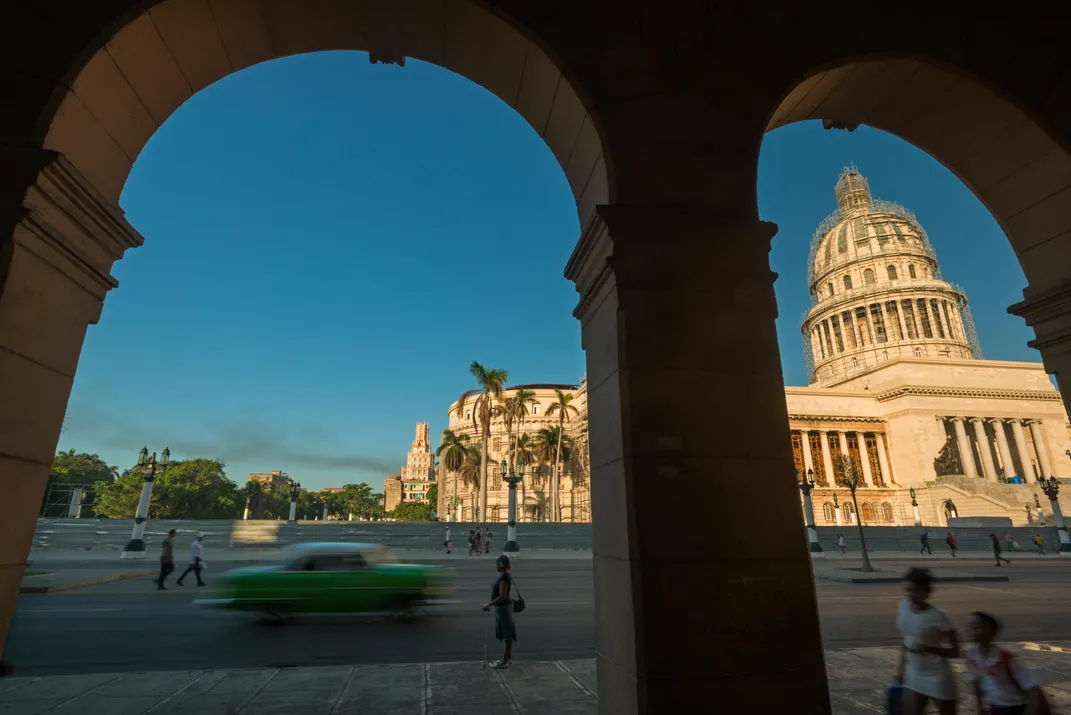
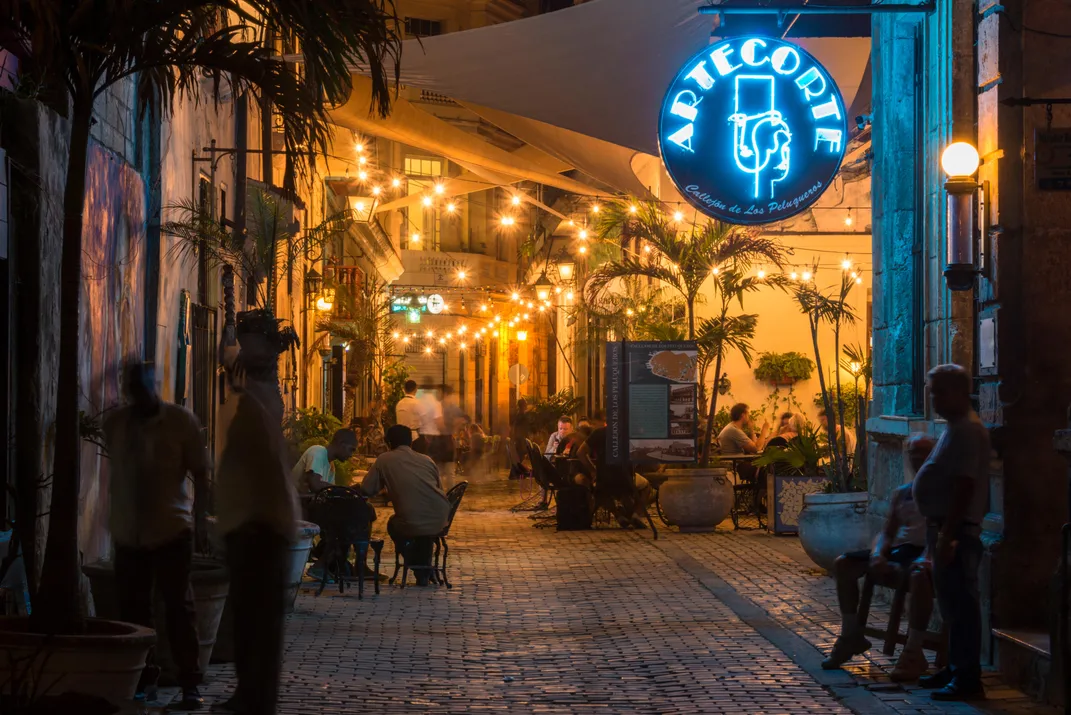
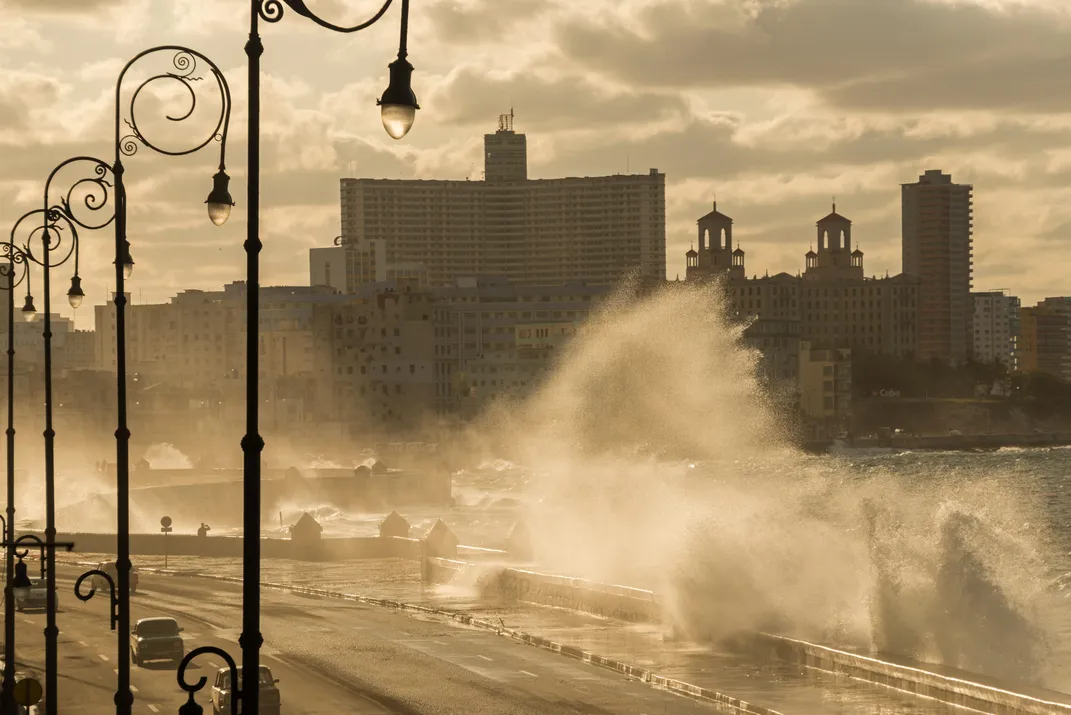
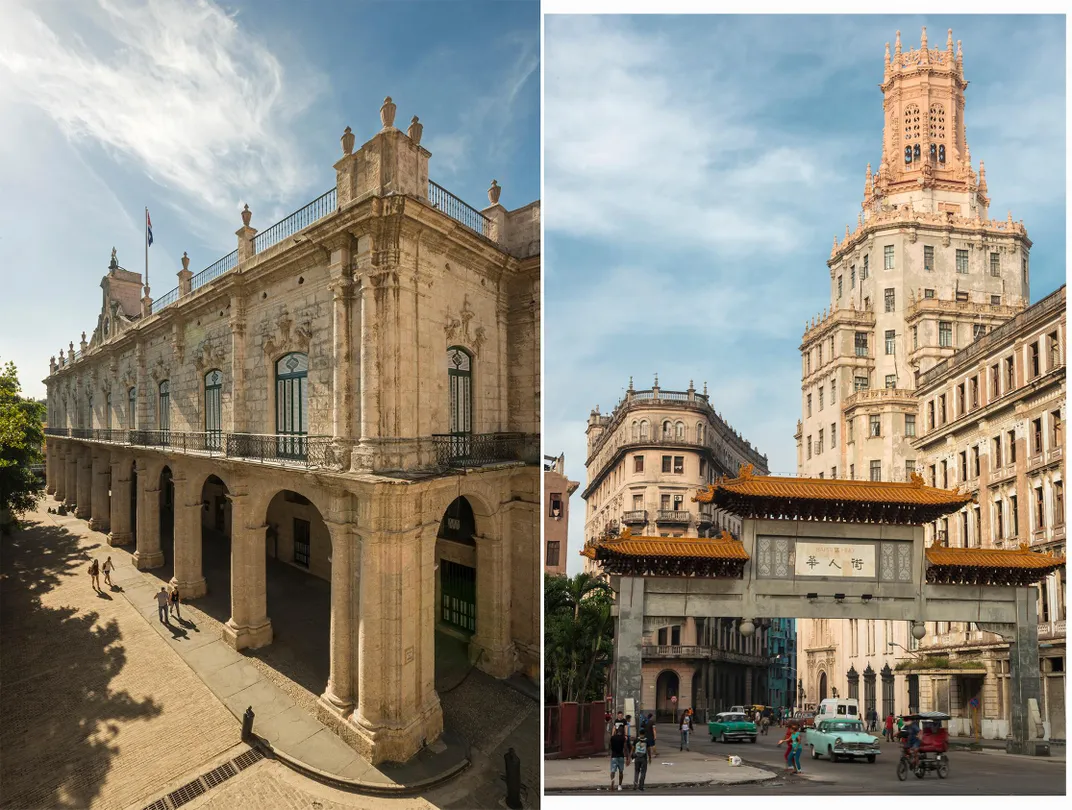
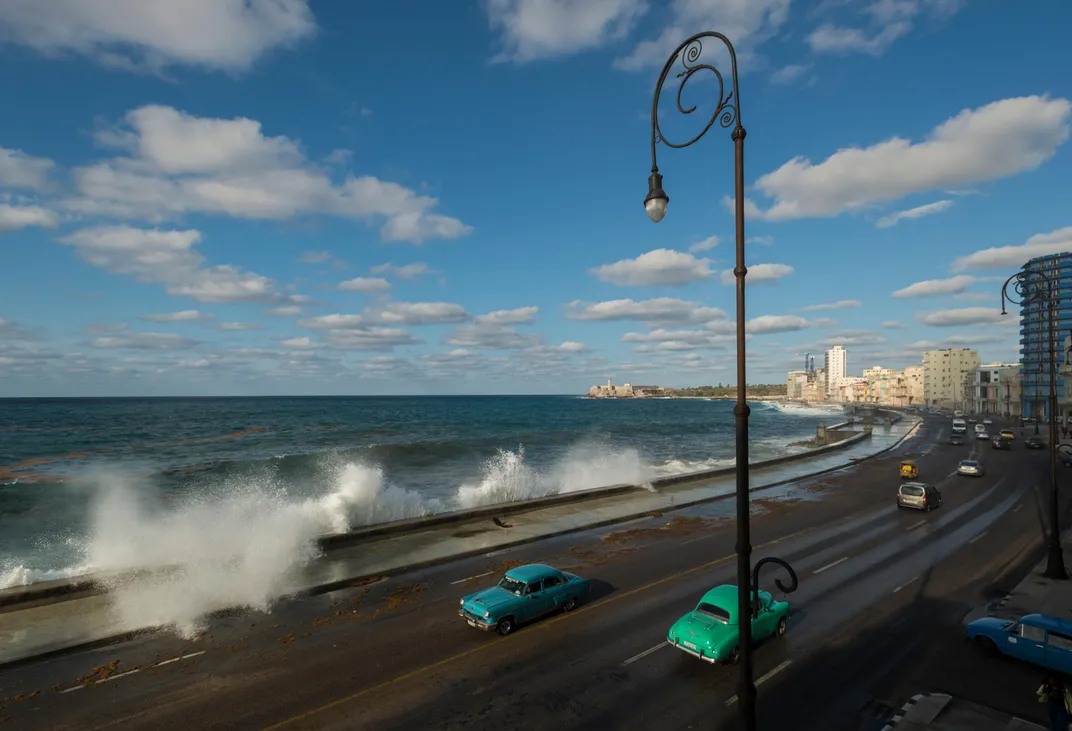
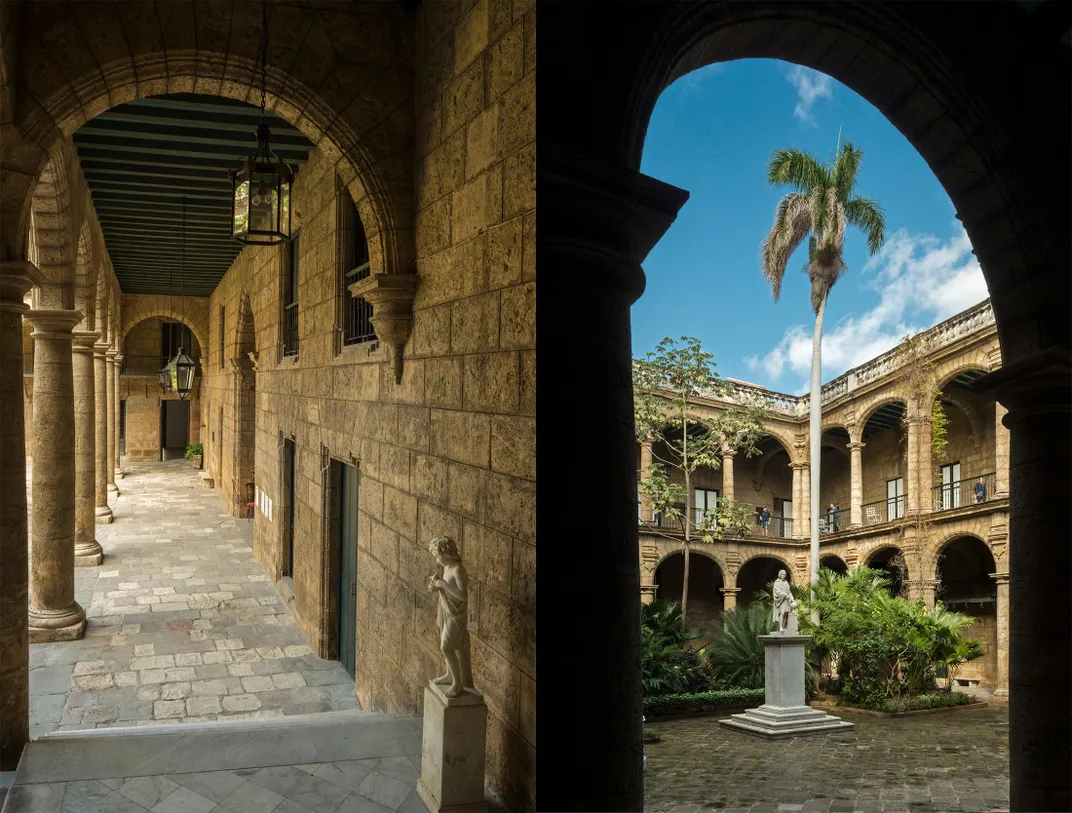
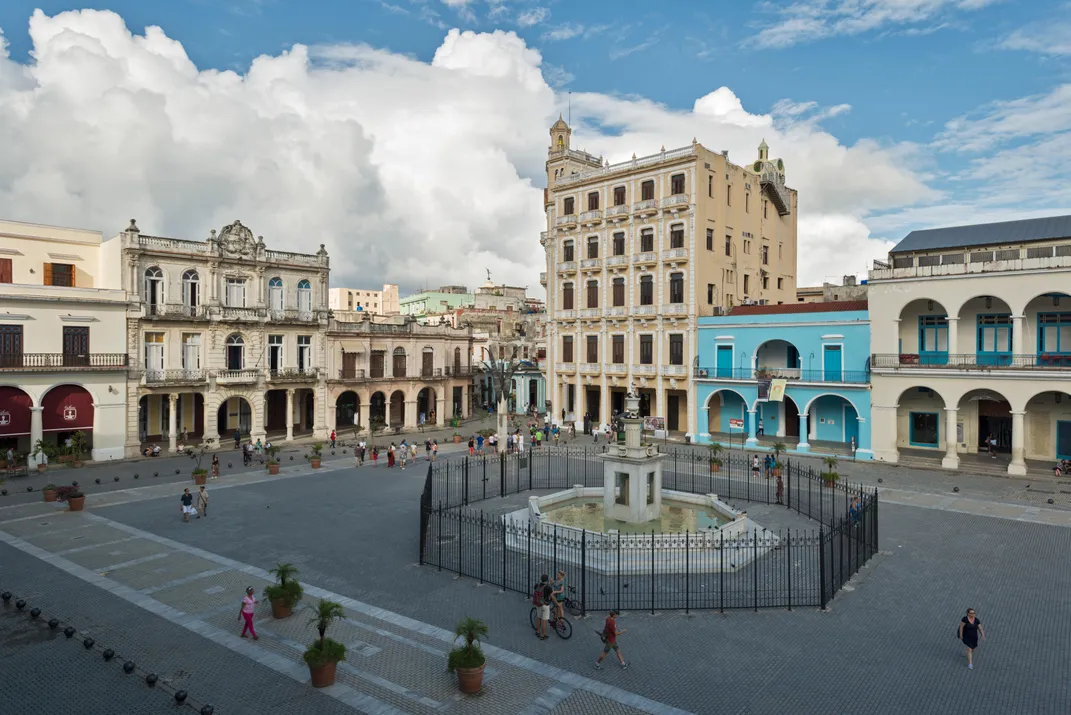
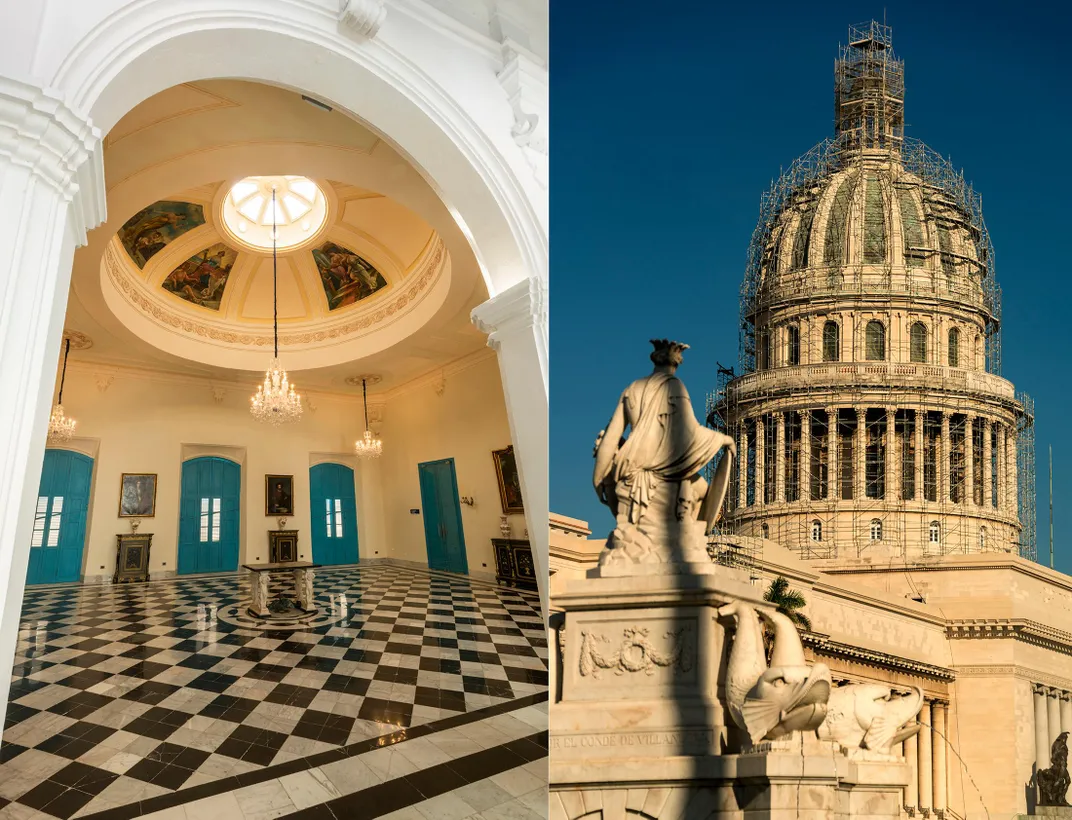
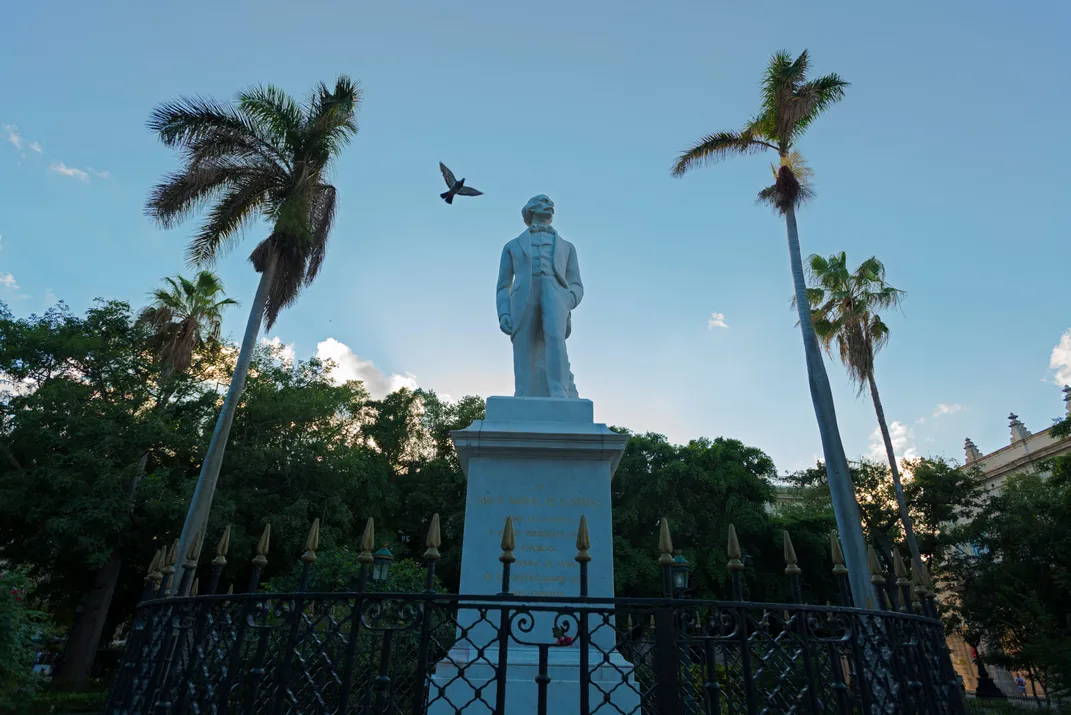
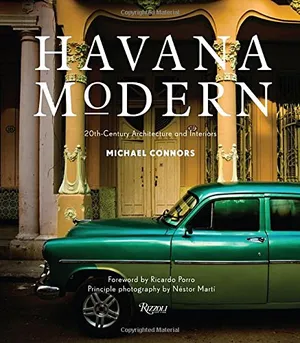
/https://tf-cmsv2-smithsonianmag-media.s3.amazonaws.com/accounts/headshot/tony.png)